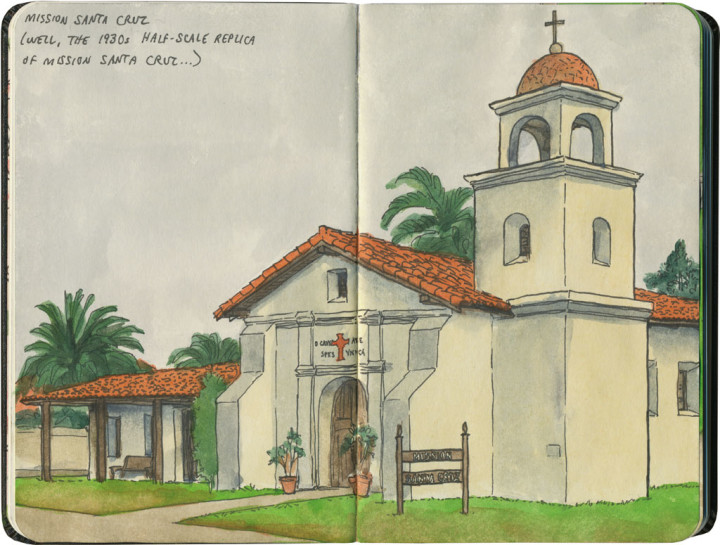This is the sixteenth installment of my Mission Mondays series, exploring all 21 Spanish Missions along the California coast. You can read more about this series, and see a sketch map of all the missions, at this post.
After the splendor of Carmel and San Juan Bautista, I have to admit that Mission Santa Cruz (or La Misión de la Exaltación de la Santa Cruz if you want to use its full name) felt like a bit of a letdown. If you didn’t know the story (and I didn’t until I got there), it’d be easy to just breeze into town, see a tidy little church in a neighborhood square, shrug and move on.
The original mission was the twelfth founded along El Camino Real, and never one of the large ones. It was first built in 1791 on the flood plain of the San Lorenzo river, but within months it was destroyed by flood waters. Not eager to repeat all of that, the padres rebuilt the mission on the hill overlooking the original site, but that too was destroyed in an 1857 earthquake.
So all that’s left of the original mission on the hill is one long quadrangle wall; and in the sketch above you can see the steeple of the Victorian-era Holy Cross Church they built on the rest of the original site.
What stands in for the mission now is a 1930s replica—but what’s odd is that it’s a scale replica. I suppose with the addition of the Victorian church across the square, there wouldn’t have been room (or in the 30s, I suspect, the funds) to build a full-scale copy of Mission Santa Cruz. It’s easy to give the replica structure a miss, but I think the fact that it’s built to half scale makes it something of a curiosity. What’s also curious is that the new structure exists thanks to a sole benefactress, one Gladys Sullivan Doyle. She single-handedly funded the construction, on the condition that she be buried on site upon her death.
So strolling through the back garden of the replica mission felt like being on a film set—or inside a human-scale puzzle. It felt odd to try to piece together the story of the place, and finding both real historical remnants and false clues presented like red herrings.
Of course, in the end my stupid brain had the last word, and dashed any further serious inquiry by replaying that Monty Python line in my head: “It’s only a model.”



